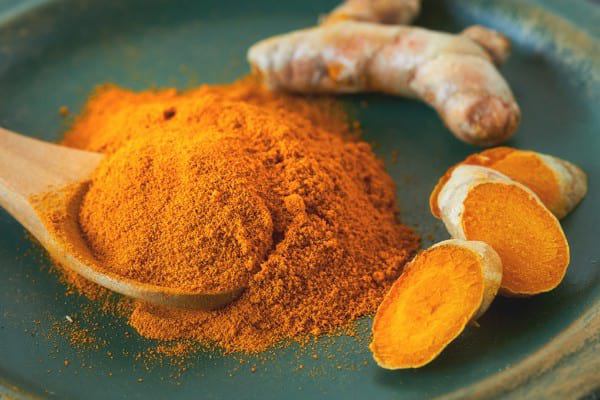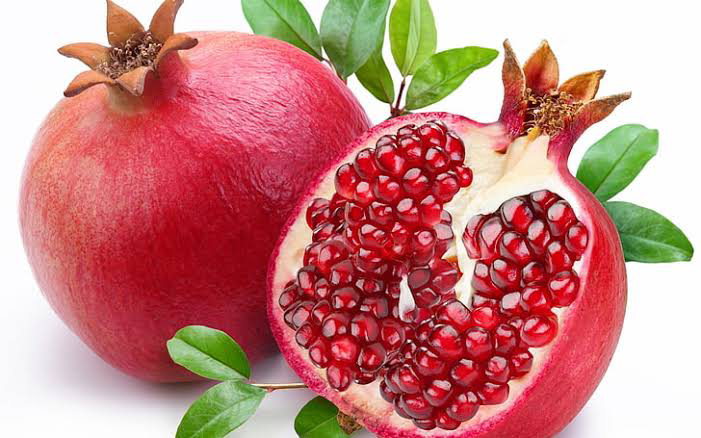Many of my favourite foods are very healthy and nutritious: antioxidant-rich fruits, green veggies, slow starches, oily fish and grass-fed meats are daily superfoods in my diet.
Perhaps one of the most overlooked sources of amazing nutrients is healthy spices and herbs which come with powerful health benefits while injecting flavour into our main dishes. Today, I want to cover 5 of the most healthful herbs and spices that you can use in your home.
While we don’t often consume herbs and spices in large quantities, even small doses can be powerful providers of nutrients, antioxidants, anti-inflammatory agents, cancer-fighting constituents, vitamins, minerals, and more.
1. TURMERIC
Turmeric has become a hot topic in health food-o-sphere and for good reason. While it’s known for being added to delicious curries, its uses are becoming increasingly more versatile. I love it because it is so easy to add to the diet, which simply makes it easier to reap the amazing health benefits of this super spice.
First and foremost, turmeric is an incredible inflammation fighter. It can even make a significant difference in individuals who suffer from rheumatic pain. This is because of the constituent curcumin – its active constituent and yellow bioactive compound, lending turmeric its colour.
Curcumin has a wide variety of biological interactions when consumed. Its anti-inflammatory benefits make it a good choice for healing leaky gut, improving digestion, and addressing autoimmune issues with inflammatory side effects.
Due to curcumin’s anti-inflammatory properties, it has the ability to slow down inflammation-related ageing processes and diseases. Curcumin is also effective at increasing antioxidant capacity in the body. It’s one of the most concentrated antioxidant foods you can consume! This means an overall reduction of oxidative stress. Finally, curcumin can increase immunity with its antibacterial and anti-viral properties, protect against cancer and the development of tumours, and improve heart health.
One of the simplest ways to increase its bioavailability (or absorption by the body) is by using turmeric alongside a dash of black pepper. It may not sound palatable, but you likely won’t notice a huge difference, especially in savoury recipes or a blended smoothie/golden milk drink. This is due to black pepper containing piperine. The combination can boost bioavailability up to 2,000%
2. GINGER
Ginger is another versatile spice that is really easy to use. Fresh ginger and ground ginger are both beneficial. You can even use ginger essential oil. I especially like to use it brewed in teas. It’s commonly known as a powerful remedy for an achy belly, but its benefits extend far beyond that. For me, ginger is often a part of my daily routine. Did you know it’s closely related to turmeric?
Like turmeric, it’s also anti-inflammatory. This is why it’s so soothing for an upset stomach which can often be traced to a root cause of inflammation somewhere down the line. Ginger can decrease markers of inflammation such as C-reactive protein.
Additionally, ginger can protect against stomach ulcers and treat menstrual cramps. It can also relieve nausea and diarrhoea. Ginger tea is great for relieving flu symptoms as well.
Raw ginger is relatively high in minerals like potassium, copper, manganese, magnesium, niacin, phosphorus, and iron. Compared to other spices, it’s easier to get a substantial amount of vitamins from ginger because you can use the raw root which provides the most bioavailable source of these minerals. In terms of vitamins, you can get a vitamin B6 and vitamin C boost from the ginger. This may be why it’s so great for immunity.
Oh, it’s also a great prebiotic food for gut health!
3. CINNAMON
Cinnamon is another spice I find quite easy to use and lucky for me, it’s slightly sweet and pretty darn good for you.
I love its versatility and try to use it in savoury recipes as well. I especially love the ease of sprinkling some on raw or baked fruit for a healthy dessert or having some in a comforting and warming tea blend. Fresh ground cinnamon tastes best, and I also like to have sticks handy for brewing or grating which makes for absolutely explosive flavour. It’s one of my top 5 recommended spices for every kitchen.
Cinnamon is notoriously packed with antioxidant capacity. It’s actually one of the most concentrated sources meaning that even just a little cinnamon – around 1 teaspoon per day – can help you get a healthy boost. Antioxidants help slow the ageing process, reduce oxidative stress and rid the body of toxins. Like turmeric and ginger, cinnamon is also anti-inflammatory. If you really want to reap the benefits, have all three together. They just so happen to complement one another very well!
It’s also thought that cinnamon might be a good fighter of neurodegenerative diseases like Alzheimer’s and Parkinson’s. It may protect the neurons in our brains, inhibit proteins connected to these diseases, and even improve motor function. Overall, cinnamon is an awesome food for the brain and body.
Cinnamon may aid in healthier skin, improve brain function, and fight infection. It’s great for managing blood sugar and insulin levels which is why I love adding it to fruits, sweet potatoes, oats, and other healthy carbs. Finally, cinnamon is a powerful cancer fighter. It may inhibit the growth of tumours, prevent DNA damage, and cell mutation.
4. SAGE
Sage is one of the most beautiful herbs, and it’s so simple to grow at home. It smells great and tastes even better. I love it fresh, but it also works its magic dried and ground for easy use, especially outside of growing season. It adds a certain depth to meals, and a crispy sage leaf garnish can turn an ordinary meal into something extraordinary. No – sage isn’t just for the Thanksgiving or Christmas table! Use it all-year-round for its awesome health benefits.
You can use sage to boost cognition, so whether you choose to consume it or inhale the scent of it, you can expect a brain boost. It’s been known to increase memory recall and retention, so it may be a superfood for the mind. This may also be linked to the potential for the sage to be a preventative food for degenerative diseases like Alzheimer’s and Parkinson’s.
Sage is relatively high in vitamin K; just two grams provides 43% of the daily recommendation. It may also normalise cholesterol levels, treat symptoms of menopause, and improve blood sugar which is particularly helpful for those with diabetes. Lastly, like most herbs and spices, sage has anti-inflammatory properties as well as plenty of antioxidants
5. PARSLEY
Most leafy greens are fantastic for you, and parsley is no exception. This superfood really fits the definition because it is a concentrated source of nutrition, antioxidants, and more. Plus, it tastes amazing. It is extremely high in vitamin K, and a single half cup of parsley contains upwards of 500% of the daily recommendation.
Parsley also contains vitamin C, vitamin A, some folate (a B vitamin), and iron. It’s high in antioxidants which can reduce free radical damage and oxidative stress markers. It’s even considered a chemo-protective plant due to its properties being able to fight damage to DNA. Like most other herbs, parsley is high in minerals such as calcium.
If you’re feeling bloated, parsley’s anti-inflammatory properties can be helpful. Parsley even acts as a natural diuretic and stimulates the kidney which can help you shed some water weight and reduce bloating. Finally, it is both antibacterial and antifungal; parsley oil is great for the skin because it can fight bacteria and clear blemishes.









Comments